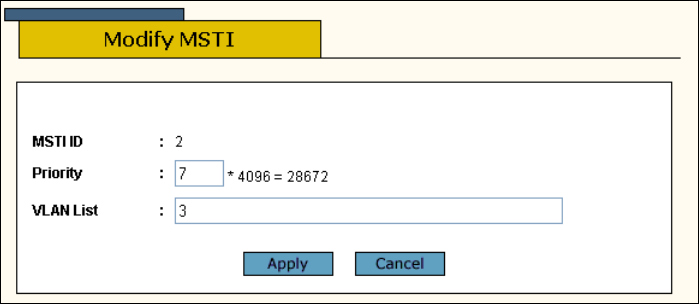User guide
Table Of Contents
- Contents
- Figures
- Tables
- Preface
- Section I
- Basic Operations
- Chapter 1
- Basic Switch Parameters
- Configuring the Switch’s Name, Location, and Contact
- Changing the Manager and Operator Passwords
- Setting the System Date and Time
- Rebooting a Switch
- Pinging a Remote System
- Returning the AT-S63 Management Software to the Factory Default Values
- Displaying the IP Address of the Local Interface
- Displaying System Information
- Chapter 2
- Port Parameters
- Chapter 3
- Enhanced Stacking
- Chapter 4
- SNMPv1 and SNMPv2c
- Chapter 5
- MAC Address Table
- Chapter 6
- Static Port Trunks
- Chapter 7
- Port Mirroring
- Section II
- Advanced Operations
- Chapter 8
- File System
- Chapter 9
- File Downloads and Uploads
- Chapter 10
- Event Logs and Syslog Client
- Chapter 11
- Classifiers
- Chapter 12
- Access Control Lists
- Chapter 13
- Class of Service
- Chapter 14
- Quality of Service
- Chapter 15
- Denial of Service Defenses
- Chapter 16
- IGMP Snooping
- Section III
- SNMPv3
- Chapter 17
- SNMPv3
- Configuring the SNMPv3 Protocol
- Enabling or Disabling SNMP Management
- Configuring the SNMPv3 User Table
- Configuring the SNMPv3 View Table
- Configuring the SNMPv3 Access Table
- Configuring the SNMPv3 SecurityToGroup Table
- Configuring the SNMPv3 Notify Table
- Configuring the SNMPv3 Target Address Table
- Configuring the SNMPv3 Target Parameters Table
- Configuring the SNMPv3 Community Table
- Displaying SNMPv3 Tables
- Section IV
- Spanning Tree Protocols
- Chapter 18
- Spanning Tree and Rapid Spanning Tree Protocols
- Chapter 19
- Multiple Spanning Tree Protocol
- Section V
- Virtual LANs
- Chapter 20
- Port-based and Tagged VLANs
- Chapter 21
- GARP VLAN Registration Protocol
- Section VI
- Port Security
- Chapter 22
- MAC Address-based Port Security
- Chapter 23
- 802.1x Port-based Network Access Control
- Section VII
- Management Security
- Chapter 24
- Encryption Keys, PKI, and SSL
- Chapter 25
- Secure Shell (SSH)
- Chapter 26
- TACACS+ and RADIUS Protocols
- Chapter 27
- Management Access Control List
- Index

Chapter 19: Multiple Spanning Tree Protocol
302 Section IV: Spanning Tree Protocols
The Modify MSTI page is shown in Figure 123.
Figure 123. Modify MSTI Page
7. To change the MSTI’s priority value, enter a value in the Priority field.
This parameter is used in selecting a regional root for the MSTI. The
range is 0 (zero) to 61,440 in increments of 4,096, with 0 being the
highest priority. For a list of the increments, refer toTable 5, “Bridge
Priority Value Increments” on page 278. The default is 0.
8. To add or remove VLANs from the MSTI, edit the VIDs in the VLAN
List field. Separate multiple VIDs with a comma.
9. Click Apply.
10. Repeat steps 5 to 9 to modify additional MSTIs.
11. To permanently save your changes, select the Save Config option in
the Configuration menu.
Deleting an MSTI To delete an MSTI, perform the following procedure:
1. From the home page, select Configuration.
2. From the Configuration menu, select the Layer 2 option.
3. Select the Spanning Tree tab.
The Spanning Tree tab is shown in Figure 109 on page 274.
4. Click Configure.
The expanded MSTP Spanning Tree tab is shown in Figure 121 on
page 297.
5. In the CIST/MSTI Table section of the tab, click the button next to the
MSTI to be deleted. You can only delete one MSTI at a time.
6. Click Remove.










